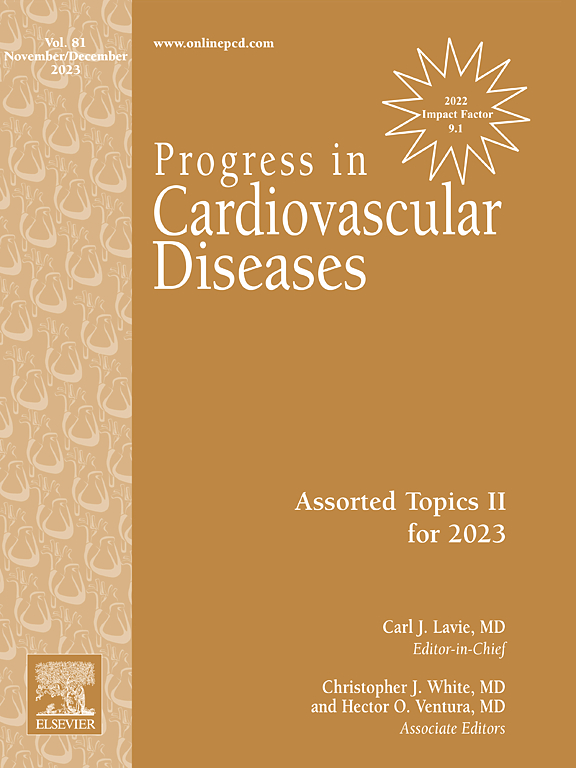Preprocedural CT angiography and machine learning for mortality prediction after transcatheter aortic valve replacement
IF 7.6
2区 医学
Q1 CARDIAC & CARDIOVASCULAR SYSTEMS
引用次数: 0
Abstract
Prediction of outcomes following transcatheter aortic valve replacement (TAVR) is challenging. Considering that in aortic stenosis outcomes are governed by both valve degeneration and myocardial adverse remodeling, we aimed to evaluate machine-learning leveraging pre-procedural computed tomography (CT) for the prediction of 1-year mortality following TAVR.
The analysis included data of consecutive patients who underwent TAVR at a high-volume center between January 2017 and January 2022 and was externally validated on unseen data from 3 international sites. Machine learning by extreme gradient boosting was trained and tested using clinical variables, CT-derived volumetric measurements including myocardial mass, and quantitative fibrocalcific aortic valve characteristics measured using standardized software. The EuroScore II and a separate machine learning risk score based exclusively on baseline clinical characteristics served as comparators.
The derivation cohort included 631 consecutive patients (48 % men, 80 ± 8 years old, EuroSCORE II 6.5 [4.6–10.3] %). Machine learning was externally validated on data of 596 patients (48 % men, 81 ± 8 years old, EuroSCORE II 5.4 [4.7–8.1] %). In external validation, the machine learning prognostic risk score had an area under the receiver operator curve of 0.79 (0.74–0.84) which was superior to the EuroSCORE 0.59 (0.53–0.66), and the machine learning risk based on clinical data alone 0.64 (0.59–0.69), p < 0.001 for difference.
Machine-learning integrating clinical data and CT-derived imaging characteristics was found to predict 1-year all-cause mortality following TAVR significantly better than clinical variables or clinical risk scores alone; and can help identify patients at higher prognostic risk prior to the procedure.
术前CT血管造影和机器学习预测经导管主动脉瓣置换术后死亡率。
经导管主动脉瓣置换术(TAVR)后的预后预测具有挑战性。考虑到主动脉瓣狭窄的结果由瓣膜退变和心肌不良重构共同决定,我们旨在评估利用术前计算机断层扫描(CT)预测TAVR术后1年死亡率的机器学习。分析包括2017年1月至2022年1月在一个大容量中心接受TAVR的连续患者的数据,并根据来自3个国际站点的未见数据进行外部验证。通过极端梯度增强的机器学习进行训练和测试,使用临床变量、ct衍生的容积测量(包括心肌质量)和使用标准化软件测量的定量纤维钙化主动脉瓣特征。EuroScore II和单独的基于基线临床特征的机器学习风险评分作为比较。衍生队列包括631例连续患者(48%男性,80±8岁,EuroSCORE II 6.5[4.6-10.3] %)。对596例患者(男性48%,81±8岁,EuroSCORE II 5.4[4.7-8.1] %)的数据进行机器学习外部验证。在外部验证中,机器学习预后风险评分在受试者操作曲线下的面积为0.79(0.74-0.84),优于EuroSCORE的0.59(0.53-0.66),而单独基于临床数据的机器学习风险为0.64 (0.59-0.69),p
本文章由计算机程序翻译,如有差异,请以英文原文为准。
求助全文
约1分钟内获得全文
求助全文
来源期刊

Progress in cardiovascular diseases
医学-心血管系统
CiteScore
10.90
自引率
6.60%
发文量
98
审稿时长
7 days
期刊介绍:
Progress in Cardiovascular Diseases provides comprehensive coverage of a single topic related to heart and circulatory disorders in each issue. Some issues include special articles, definitive reviews that capture the state of the art in the management of particular clinical problems in cardiology.
 求助内容:
求助内容: 应助结果提醒方式:
应助结果提醒方式:


